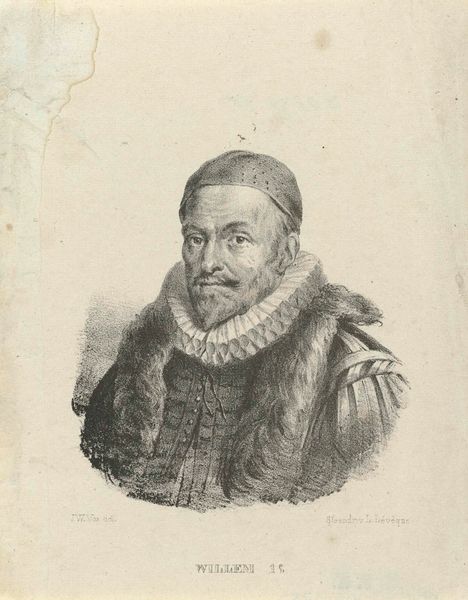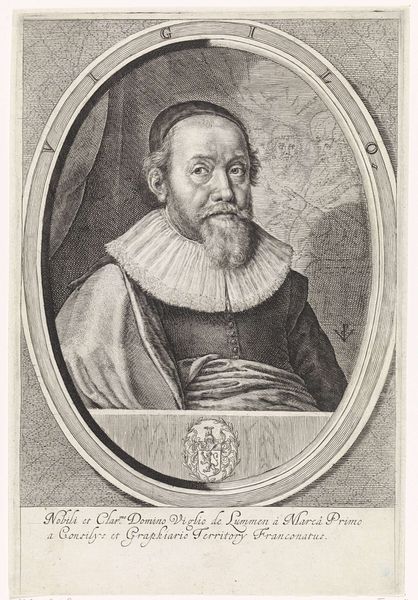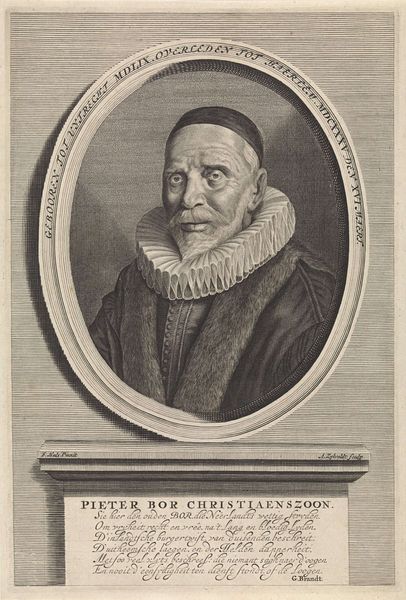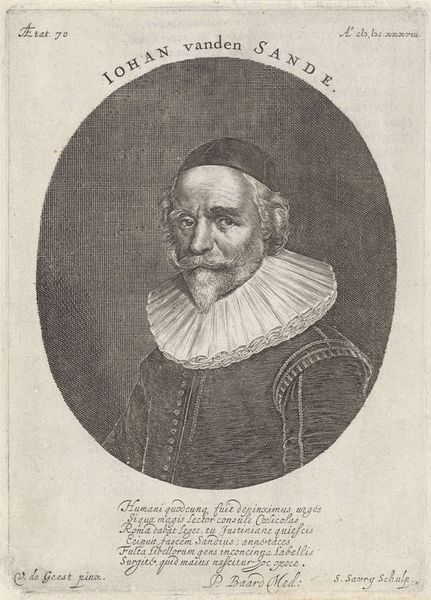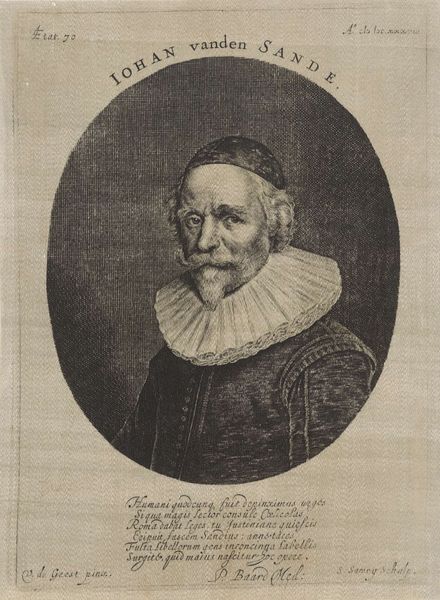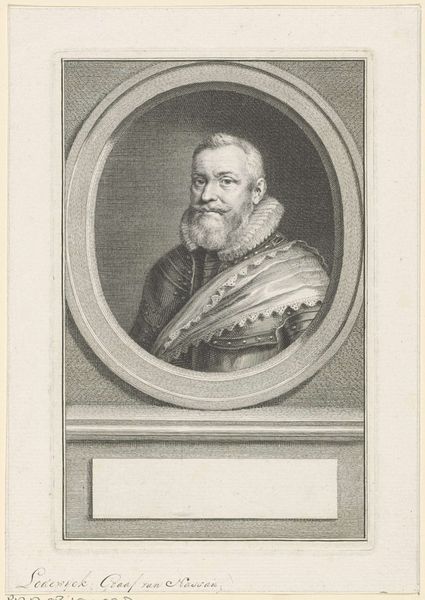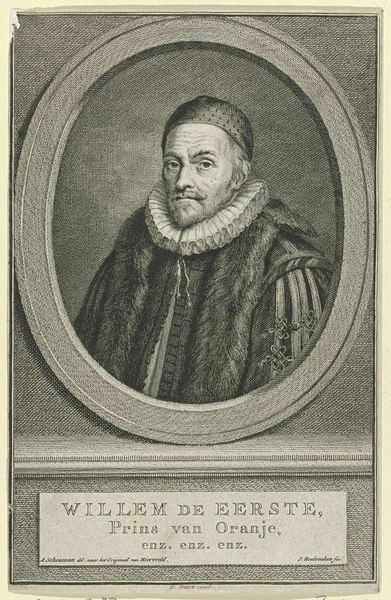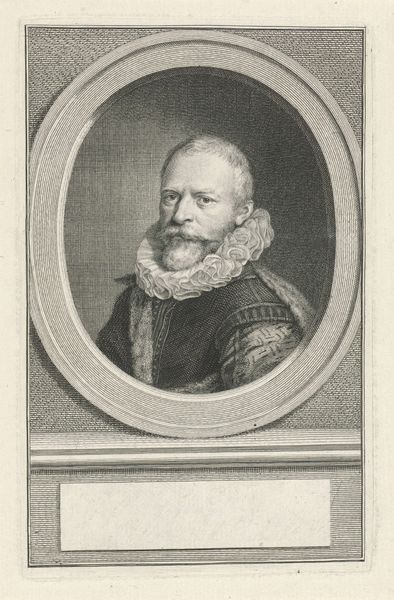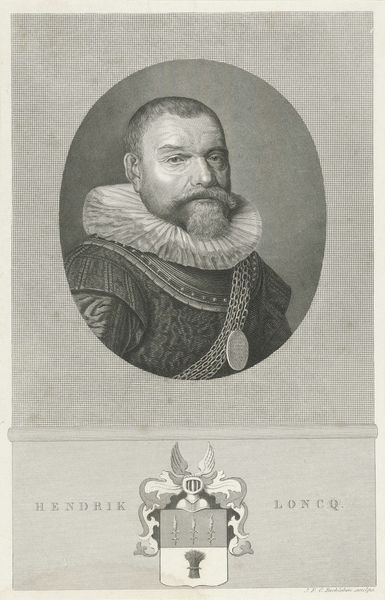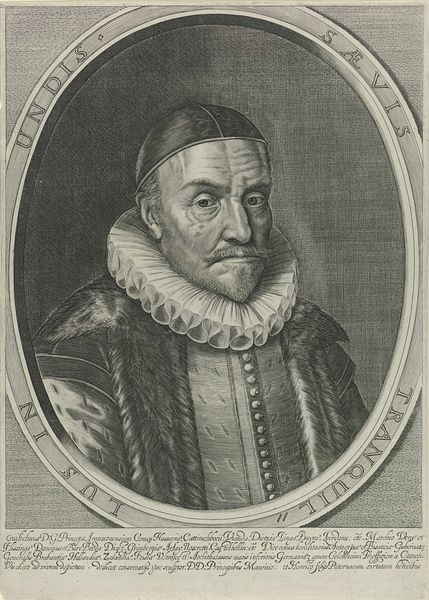
print, engraving
#
portrait
#
pencil drawn
#
baroque
# print
#
old engraving style
#
portrait drawing
#
engraving
Dimensions: height 308 mm, width 198 mm
Copyright: Rijks Museum: Open Domain
Curator: Well, hello there. We are standing before Theodor Matham’s "Portret van Reinier Adriaensz. Pauw op 67-jarige leeftijd," created in 1631. This baroque portrait is an engraving, a print. What strikes you first about it? Editor: The sheer gravitas! It's that unwavering gaze and the severe formality of the ruffled collar. You feel like you're in the presence of someone intensely serious, perhaps a bit unforgiving. Like you are being judged… Curator: It's fascinating, isn't it? Reinier Pauw was a powerful figure in Amsterdam, a lawyer and politician, and this engraving certainly projects authority. The baroque style lends itself well to that sense of imposing presence, with the fine lines of the engraving emphasizing detail and texture, especially in the fur coat and ruff. Editor: Those ruffs are something. They immediately scream status, almost like visual declarations of wealth and power. The lettering around the oval…it reminds me of inscriptions on Roman busts, turning Pauw into this stoic historical figure. Is there symbolism beyond the obvious display of importance? Curator: The inscription does echo those classical precedents. It is naming all the official posts Pauw held during his life. The oval format and surrounding inscription create this feeling of timeless importance but it’s not just pomp. Consider how portraiture, especially in print, solidified the identity of the sitter and then circulated it, turning the sitter into an almost iconic symbol. Editor: It's such a controlled image, every line seems deliberate. But does it ever feel… theatrical? That fur draped over the shoulder seems almost like a prop, contributing to a very carefully constructed persona. Does Matham allow any flicker of Pauw’s actual personality to seep through? Or is it all a performance of power? Curator: Matham does hint at character in the small details of the face, the lines around his eyes, the set of his mouth. These suggest a man who is both shrewd and weary. The engraving captures not just the outward appearance of authority, but perhaps the inner weight of responsibility too. I suspect that hint of vulnerability makes it an insightful representation. Editor: It definitely brings the man out from behind the title. Seeing the engraving, even through a digital display, still conveys so much about the era and the individual. Makes you consider the weight that those portraits carried at that time. Curator: It's more than just an image; it's a testament to a man, an era, and the lasting power of symbols. A moment captured.
Comments
No comments
Be the first to comment and join the conversation on the ultimate creative platform.
